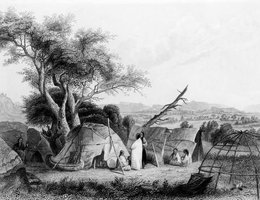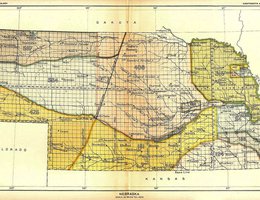

Between 1825 and 1892 in Nebraska, there were a series of 18 different treaties between Native American tribes and the U.S. government in which Indians gave up their land. Nationally, there were hundreds of treaties. These treaties were important because each made it legally possible for the United States to make land available to settlers. The treaties of the early 1800s (and later) made the settlements of the 1870s possible.
The map below is linked to the actual text of the treaties, or a summary of the U.S. Congressional act, that ceded (gave up) land to the United States. These treaties and agreements make fascinating reading. The terms under which tribes gave up their land are remarkable, even for a time when a dollar bought a lot. Well-known political figures in Nebraska were among the negotiators who signed the documents.


Throughout this early homesteading period, conflicts between native tribes and white settlers set the stage for the final confinement of Indians on reservations. The Pawnee, the Sioux, the Cheyenne, the Omaha ... all of the tribes were eventually forced to live on reservations either outside of Nebraska or on small plots of land within the territory. The Omaha, Winnebago and Santee Sioux settled in northeast Nebraska. The Pawnee, Ponca, Cheyenne, Oto and Missouri tribes were all removed to Indian Territory in what is now Oklahoma.
By 1878, the Lakota, Brule and Ogalala Sioux had been moved from their Nebraska agencies to reservations in South Dakota. So, life for the Native American on the Great Plains in the mid to late 1800s was one of increasing conflict with the white man for space, loss of their traditional lands, and the gradual destruction of their way of life.
Some "Indian Campaign" Medal of Honor recipients are in the Nebraska Hall of Fame.
Learn more about its members.